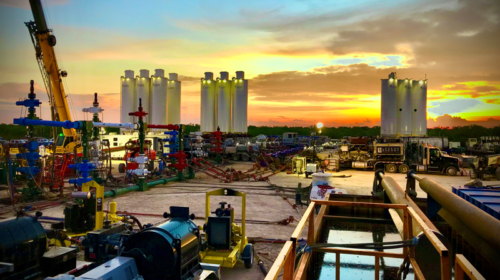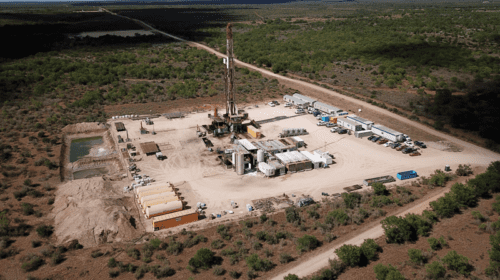Back in 2021, we had the pleasure of authoring a contributed article for OILMAN Magazine about the value of investing in qualified opportunity zones, (Missed) Opportunity Zones – Why Investors Should Take Note. The submission provided readers with a comprehensive explanation of qualified opportunity zone investing, including both the advantages they bring to underdeveloped and impoverished census tracts, and how investors benefit from the generous tax breaks included, provided they meet the program’s requirements.
To recap, qualified opportunity zones are a new investment vehicle created by the Tax Cuts and Jobs Act of 2017, whose funds are designed to improve federally designated opportunity zone tracts. Provided investors maintain their investment stake for a 10-year period, they owe nothing in capital gains tax until the end of the 2026 calendar year.
We’re now six years into the qualified opportunity zone program, which seems like an appropriate time to revisit the program and measure its progress as an investment vehicle.
How It Started
It’s fair to say that opportunity zone investing got off to a sluggish start. Investors, initially wary of the lack of guidance from both the IRS and U.S. Treasury Department, were slow to respond to the opportunity, save for one particular target market: real estate developers. Inherently familiar with investing in land use, it was this sector that took early advantage.
After further guidance was issued on the benefits of investing in qualified opportunity zones, capital formation picked up steam in 2020. Using data obtained from a report issued by analysts from the Treasury Department,* a review of all IRS Form 8996 filings between 2018 and 2020 reveals approximately $47 billion was invested in QOZs, the majority of which originated in the real estate sector. Of the 8,700-plus available opportunity zones, a little less than half (48 percent) received investment, well short of benchmark expectations. The initial disconnect in exploring QOZs meant that, by the time there was an understanding of their value, the maximum level of tax credits and promising earnings had expired.
How It’s Going
While there’s been a brief slowdown in QOZ capital formation as of late, investor interest, particularly among high net worth individuals, is still on the rise – and for good reason. Of the estimated $34 billion invested since the program was launched, nearly a third ($9.68 billion) occurred in 2022 – a single-year record. Using data tracked by Novogradac, the median average of equity raised in QOZ funds amounts to $4.6 million. Three-quarters are focused on single cities, with a concentration in multifamily and commercial real estate development. Because investor interest remains high, and the QOZ program has produced undeniable progress for distressed census tracts, efforts are underway to extend the 10-year tax deferral period to 2028, and perhaps even further. Surprisingly, there is widespread support for this plan on both sides of the political aisle, with new legislation pending in which only a few minor details remain to be ironed out.
A “Mega-Roth” Opportunity
Regardless of the class of investor, as well as the industries pushing qualified opportunity funds, nobody disputes the vehicle’s investment value, provided they maintain their holdings for the 10-year period. While traditional Roth IRAs cap contributions between $6,500-$7,500 per annum, there’s no such limit with QOZ investing, creating what many in the financial industry refer to as a “Mega-Roth.” Those who explore this investment vehicle are only limited to the amount they have in capital gains.
Thus, it’s not just the tax deferred advantage to consider, it’s the tax-free capital gains benefit of the investment’s full lifecycle that remains its most attractive feature. Thanks to these extraordinary incentives, the Treasury Department is well on its way to attaining its 10-year goal of $100 billion in total QOZ investment.
As Daniel Goodwin, chief investment strategist with Provident Wealth Advisors, shares, “Tax deferment is a powerful and rare incentive, tax elimination is even more so. And, while the array of potential legislative adjustments stands to make opportunity zone investing even more valuable in the future, it’s impossible to overstate the existing value of capital gains tax deferral to current investors right now.”
At U.S. Energy Development, we’re obviously big proponents of this advantageous investment vehicle, as evidenced in our recent company announcement regarding the relocation of our corporate headquarters to a qualified opportunity zone. In 2024, we’ll be transitioning our offices to the famed Fort Worth, Texas, Stockyards, where we intend to occupy 51,000 square feet of the historic, but currently idle, Armour & Co. building, which dates back to the early 20th century.
According to Jordan Jayson, president and CEO of U.S. Energy Development, the company has big plans for taking up residence in this QOZ location. “Our goal is to create a project that seamlessly blends with the culture and distinct surroundings of the Stockyards. We look forward to collaborating with the city of Fort Worth and our neighbors to realize this vision.”
Provided our congressional leaders work to extend the deadlines for investing in QOZs, and investor interest remains robust, we may see many more such underutilized tracts in the U.S. find their way back to prominence. Hopefully, along with quite a few satisfied investors to boot.
Editor’s Note: This article is for informational purposes only, and is not intended to provide, and should not be relied on for, tax, legal or accounting advice. You should consult your own tax, legal and accounting advisors before engaging in any transaction.
*Coyne, David and Johnson, Craig E., Use of the Opportunity Zone Tax Incentive: What the Tax Data Tell Us (Nov. 22, 2022).
Matthew Iak is the executive vice president of U.S. Energy Development Corporation (USEDC) and a member of the company’s Board of Directors. Iak is also the president and CEO of Westmoreland Capital. He has extensive knowledge of private placement, Regulation D, and estate and tax planning strategies. He has pioneered the way for multiple new investment structures in the oil and gas space. Since 2005, Iak has overseen a capital raise of approximately $2.0 billion. He can be reached at miak@usedc.com.
Oil and gas operations are commonly found in remote locations far from company headquarters. Now, it's possible to monitor pump operations, collate and analyze seismic data, and track employees around the world from almost anywhere. Whether employees are in the office or in the field, the internet and related applications enable a greater multidirectional flow of information – and control – than ever before.








